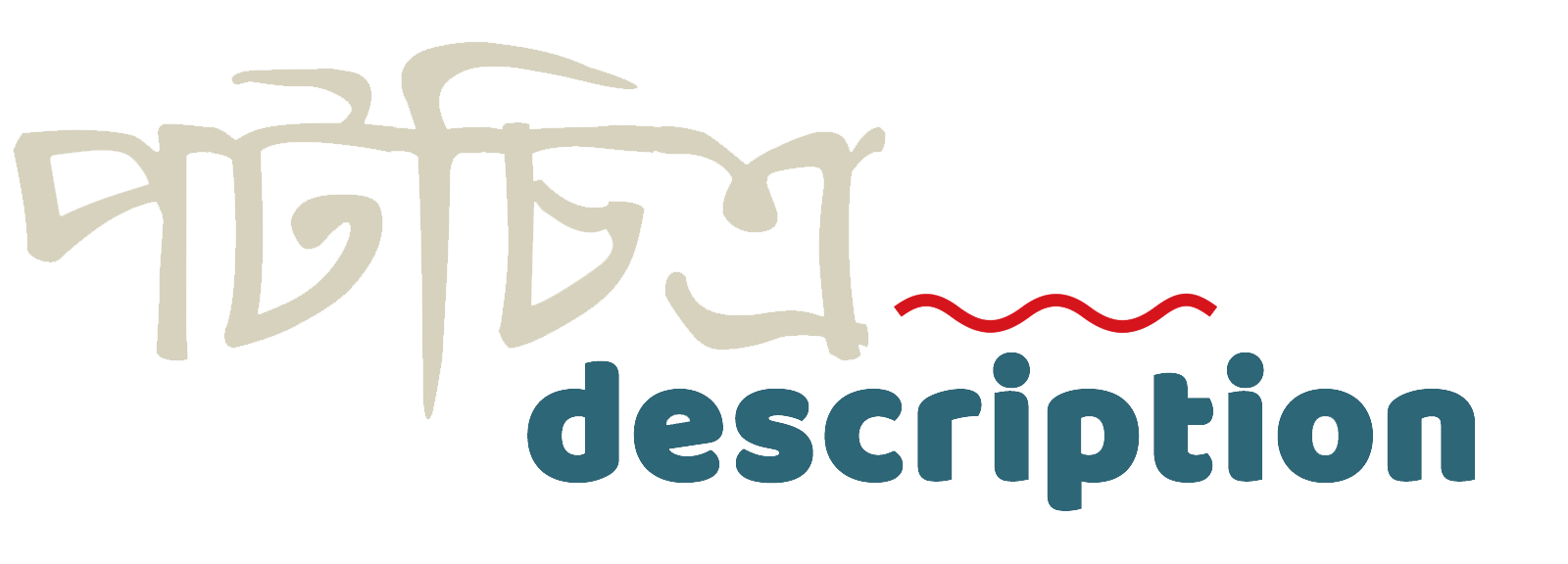
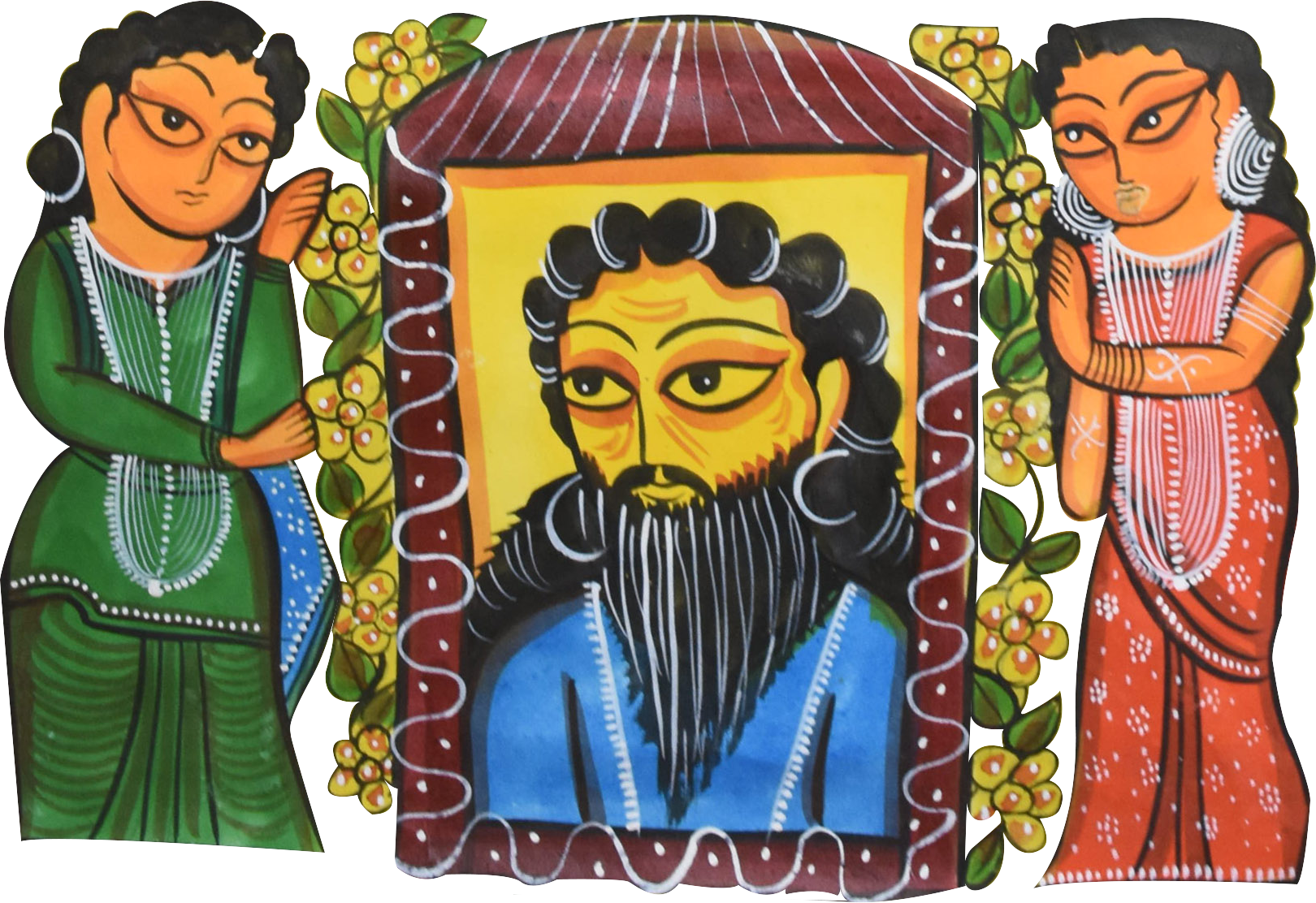
The word ‘Pata’ comes from the Sanskrit word ‘Patta’, meaning cloth and ‘Chitra’ refers to painting. In Patachitra, stories are painted as frames on long scrolls and the Patuas who paint Patas, gradually unfurl them while presenting the story through their songs. The songs are known as Pater Gaan. Patachitra is known for its bold colours, lines and strokes. One of the fascinating aspects of Patachitra is the use of natural colours derived from local sources like fruits and flowers. The Patuas paint and sing on various themes like mythological tales (Ramayana, Mahabharata, Mangalkabya), historical and contemporary themes (biographies of great personalities, nuclear warfare) and social issues (women empowerment, child right, health, literacy).
The Patachitra tradition practiced in Purulia is known for its simplistic style and compositions, minimalistic background decoration and distinctive themes, which are strikingly different from the scroll paintings of Medinipur, Bankura, Murshidabad.

The spectrum of natural colors and their sources is amazing. Saffron is created from Geru Pathar stone, yellow ochre from Holud Pathar stone, white from Khorimati clay, black from a type of soot called Bhushokali. Orange comes from Kamala Pathar stone, green from Simpata leaves, purple from Pui Metuli leaves, pink from banyan buds or Boter Kuri, red from Phanimansha flowers, blue from Dela Nil clay, and yellow from Palash flowers!

Most of the scrolls start with representation of the Jagannath trinity, Brahma and other Hindu divinities.The Patuas paint stories ranging from the origin of the Santhals to the likes of Madanmohan Leela, Krishna Leela and Raas Leela, which reflect the influence of Hindu neighbours and intermingling. The Jadu Pata depicts the story of creation of the universe and the origin of the Santhals.The Yama Pala Pata depicts the Santhali perceptions of hell. Another popular theme is that of the tiger god or Baghut Bonga.
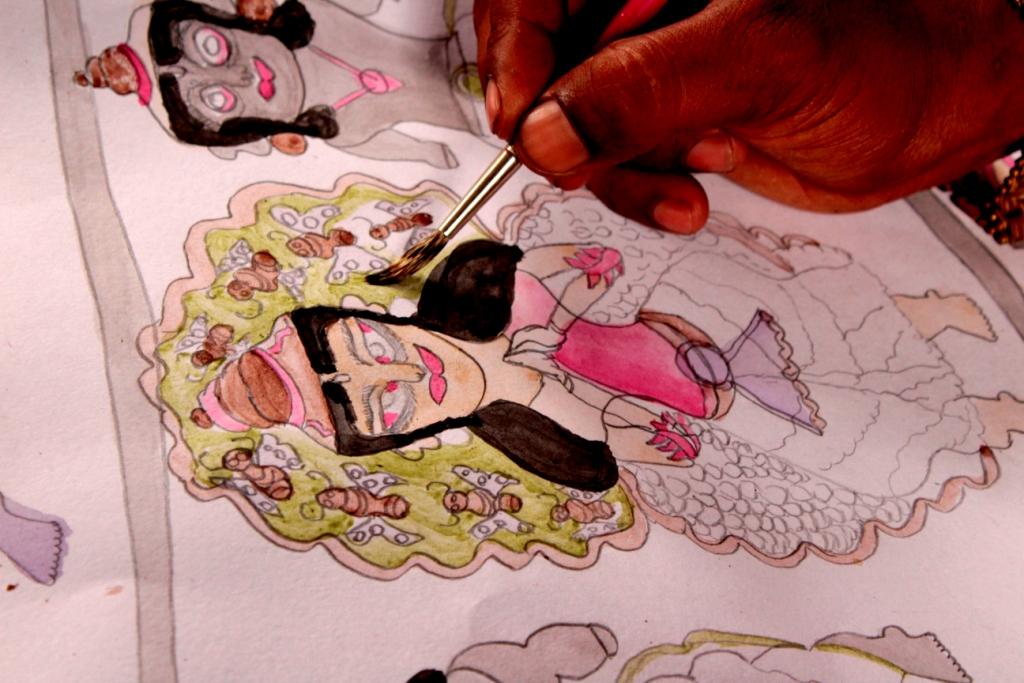
Similar to other patuas, the artists of this village use black colour for the outline. As a result, the drawings on the base become more visible. Simplicity is the trademark of these pats. The pats are also marked by minimal background decoration and usage of colour. After drawing the main pat with thin black border, it is filled with colours.
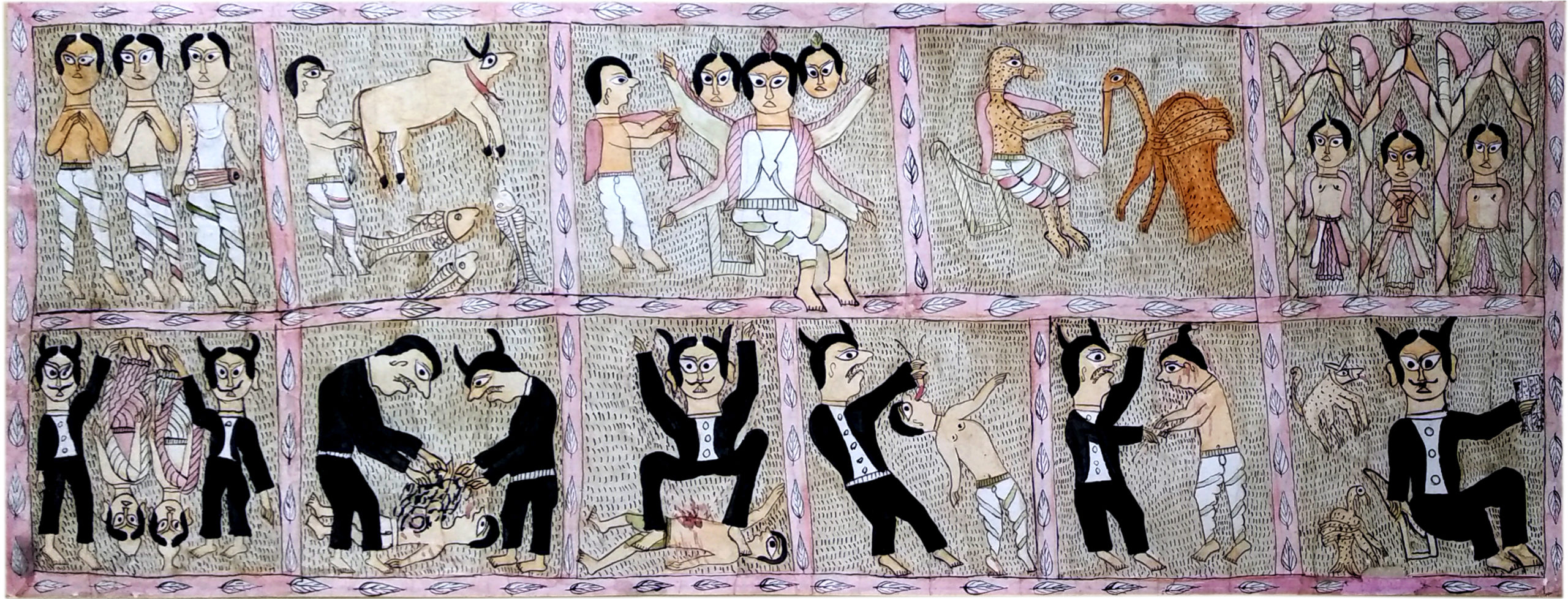
The Patachitra tradition practised in Purulia is known for its simplistic style and compositions, minimalistic background decorationand distinctivethemes, which are strikingly different from the scroll paintings of Medinipur, Bankura, Murshidabad. Purulia’s Patachitra are essentially a ritualistic practice associated with events in the daily lives of people.
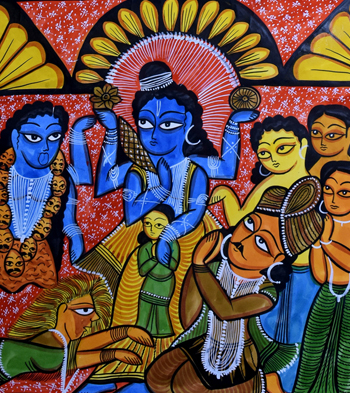
Bengal Patachitra is known for its long scrolls depicting a story. The scroll is painted in frames, each frame narrating a part of the story. The Patachitra scrolls come in varied sizes from one to one and a half feet in width and three to twenty-five feet in length depending on the narratives. The scrolls are mostly painted vertically and consist of ten to fifteen frames. In another variation, the story frames are arranged horizontally with 3-6 frames together. Patuas also paint square and rectangular single frame Pata used to paint one particular deity, mythical or social subject.
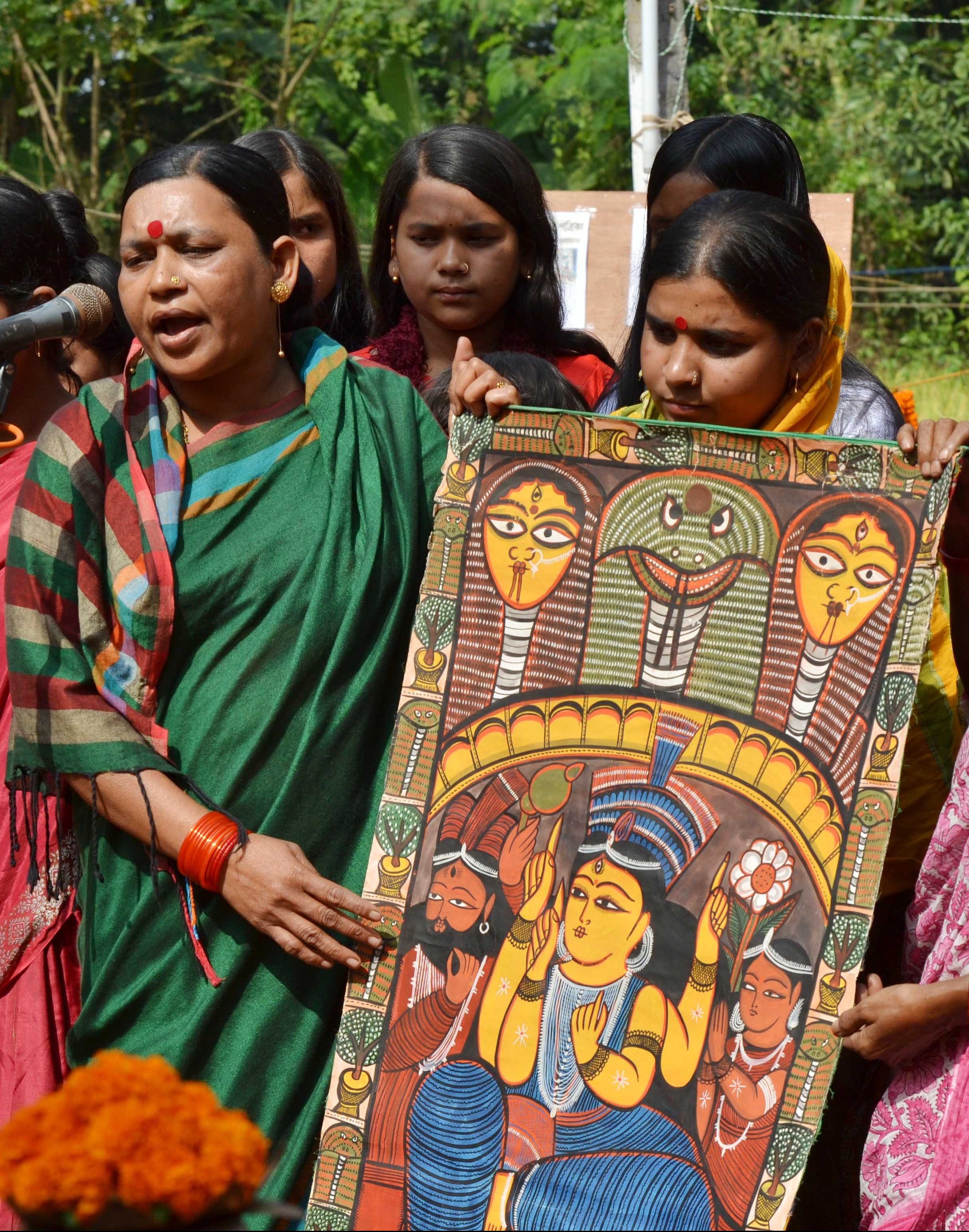
What makes Bengal Patachitra different from other forms of traditional paintings is the song (Pater Gaan) associated with it. The songs are composed by the Patuas themselves before the painting begins. The songs follow traditional or modern tunes with old or new words. The song sets the story for the scroll, and brings it to life. The songs have specific stages: a) The Kahini or Story, b) The Mahatmya or Glory, c) The Bhanita or Self-introduction. Initially, songs of Patachitra were influenced by Baul, Kirtan, Jhumur, Jatra songs and other such music. Now mostly old tunes of Pater Gaan are used in the songs. Nearly 60 Pater Gaan has been documented.
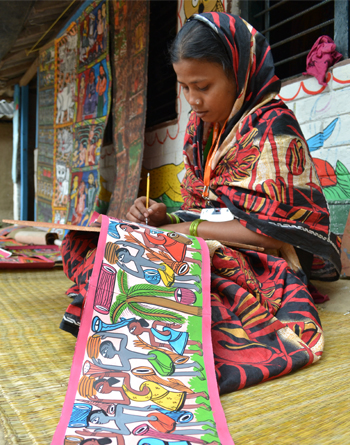
The canvas for the scroll is prepared by the patuas. The base for the Patachitra painting is made with saree cloth and paper. The painting is done on paper but a layer of cotton cloth is pasted at the backside of the canvas for strengthening the canvas and longevity of the art work.
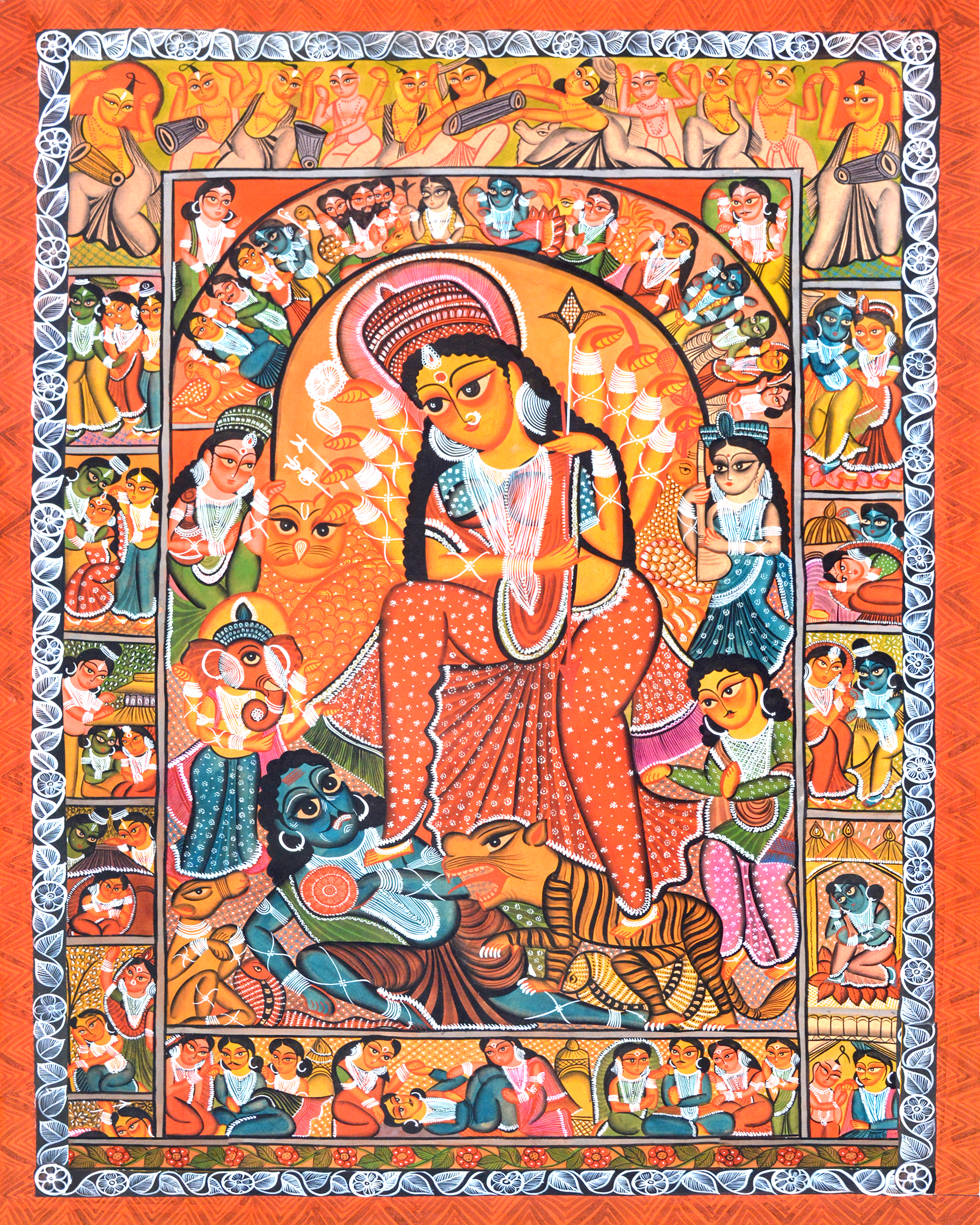
Themes of Patachitra explore the relationship between sacred and profane, and the boundaries between religions. Themes of stories present a local interpretation of the world seen through a mythological framework that is projected onto current events. Patachitra is used as a communication tool and to create content for graphic novels and animation as well as to spread awareness on subjects like environment, child marriage, transgender etc.
Themes of stories can be mythical and religious: Manasa Mangal, Satya Pir as well as social issues like environment, dowry, women empowerment. There is increased willingness among the artists to adapt themes based on current events.
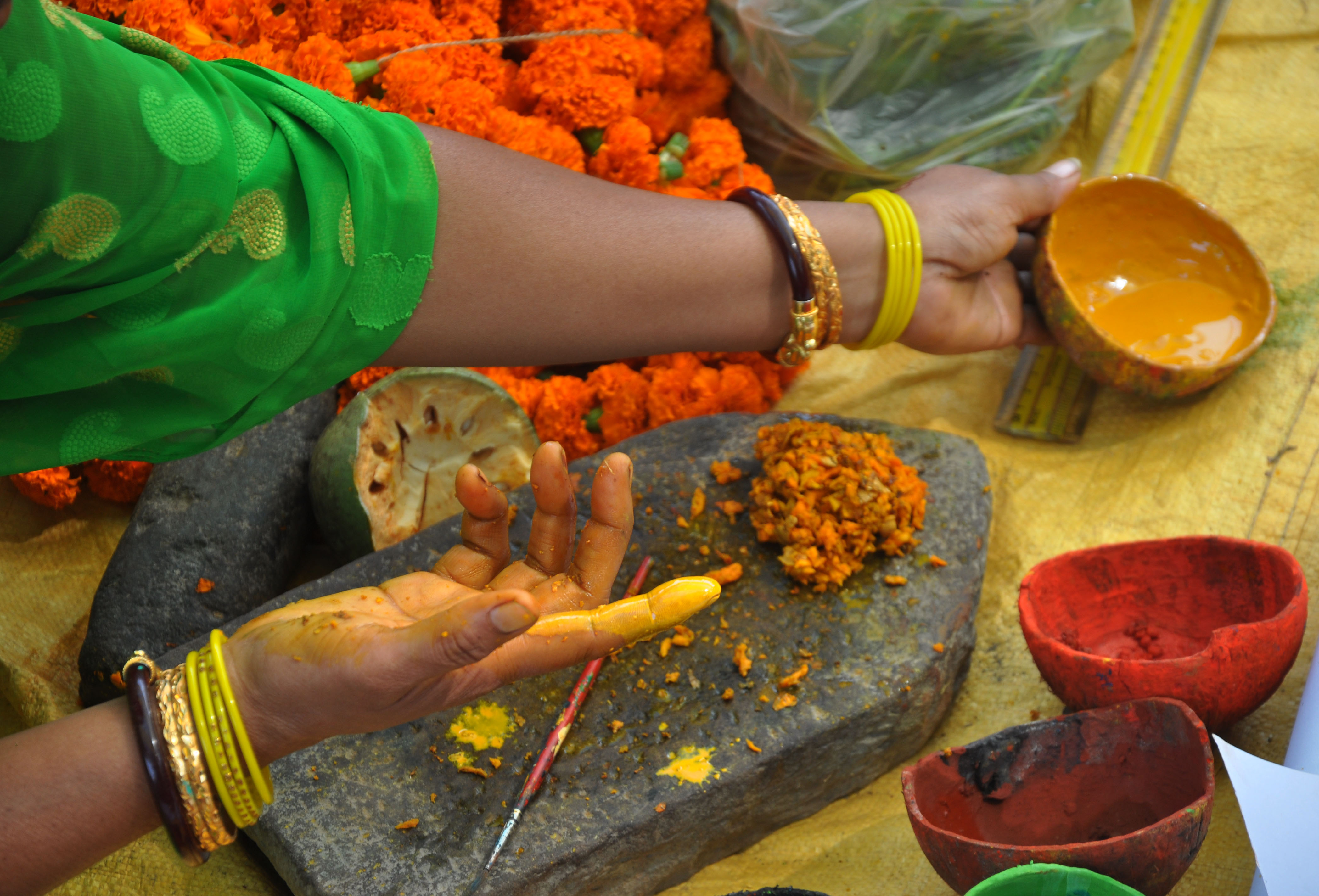
One of the unique features of Patachitra is the use of natural colour made by the Patuas from locally available sources like leaves, vegetables, stones and flowers etc. The knowledge of colour making is passed on from one generation to the other.